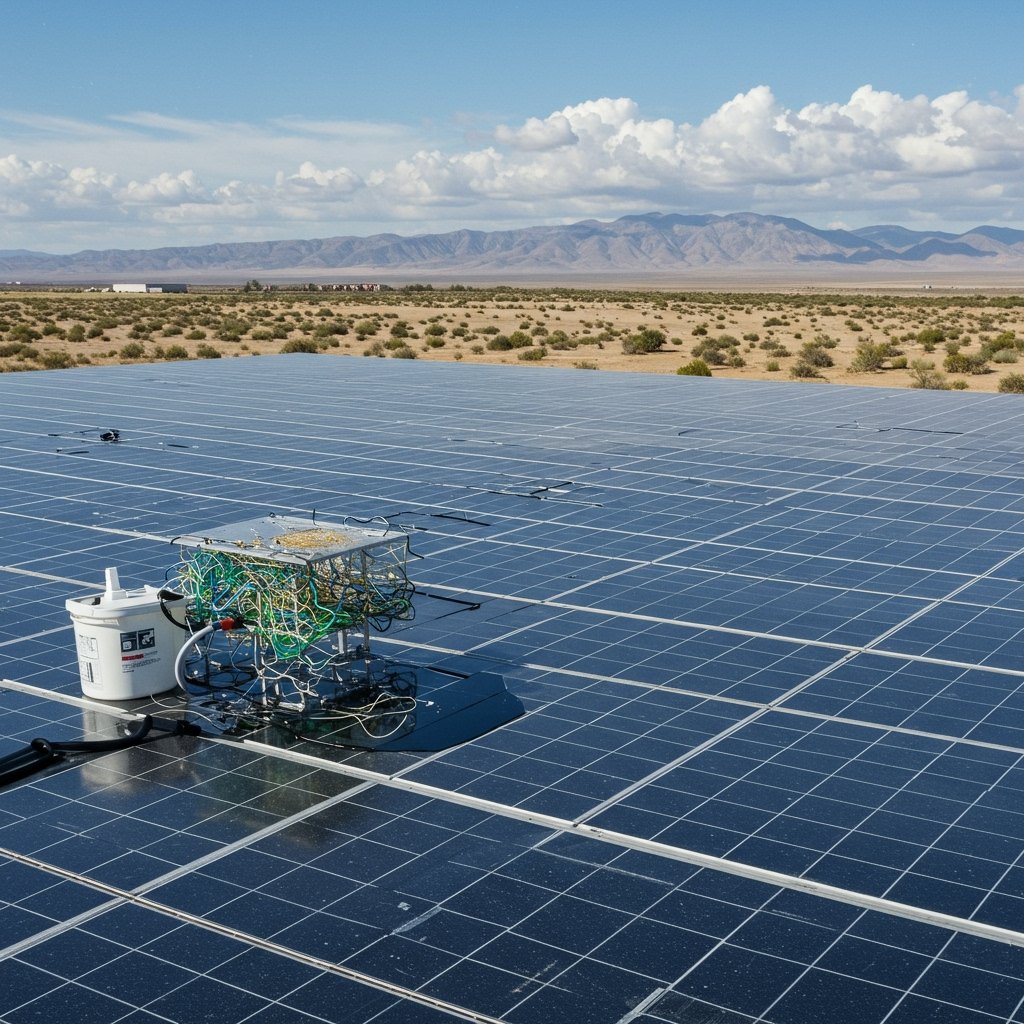An international consortium of scientists has announced a significant breakthrough in solar energy technology, achieving a new world-record efficiency for single-junction perovskite solar cells. By integrating a previously untried chemical additive, researchers reported converting over 26 per cent of incoming sunlight into electricity, a critical milestone that addresses long-standing stability challenges and propels the promising, lower-cost perovskite technology closer to widespread commercial adoption.
The achievement, detailed in a recently published scientific paper, underscores the rapid advancements in perovskite research. While silicon-based solar panels dominate the current market, offering high efficiency and durability, they are relatively expensive to manufacture. Perovskite materials, a family of compounds often based on a crystal structure similar to the naturally occurring mineral perovskite, offer the potential for significantly lower production costs through simpler, solution-based manufacturing processes, including printing or coating techniques.
Understanding the Promise and Challenges of Perovskites
Perovskite solar cells have captivated researchers due to their remarkable power conversion efficiency, which has seen a meteoric rise over the past decade, starting from just a few per cent to now exceeding 26 per cent in laboratory settings. Their versatility extends beyond efficiency; they can be made thin, lightweight, and potentially flexible, opening up new applications such as integration into building facades, windows, or even portable electronics.
Despite this rapid progress, the primary hurdle preventing perovskite technology from competing head-to-head with silicon in the market has been its stability and durability. Perovskite materials can be highly sensitive to environmental factors such as moisture, heat, and even prolonged exposure to light, leading to degradation and a significant reduction in performance over time. For a technology intended to operate outdoors for 25 years or more, ensuring long-term stability has been paramount.
The Breakthrough: A Novel Additive’s Impact
The core of this latest breakthrough lies in the strategic incorporation of a novel chemical additive within the perovskite material layer. While the specific composition and interaction mechanism are detailed in the scientific publication, the effect is clear and substantial. This additive reportedly improves the quality of the perovskite crystal structure, reducing defects that act as traps for charge carriers (electrons and holes) and lead to energy loss. Minimising these defects is crucial for boosting efficiency.
Crucially, the additive also plays a vital role in enhancing the material’s resilience. By passivating or neutralising sites within the material that are vulnerable to degradation caused by moisture or heat, the additive significantly improves the cell’s operational stability. This simultaneous improvement in both efficiency and stability is particularly noteworthy, as often optimising one metric can negatively impact the other in solar cell research.
The international research consortium, comprising experts from multiple institutions, leveraged their combined knowledge in materials science, chemistry, and device engineering to design, synthesise, and test this new additive and its impact on cell performance. Their rigorous testing protocols reportedly validated both the record efficiency under standard laboratory conditions and improved performance stability under accelerated aging tests.
Implications for the Future of Solar Energy
Achieving over 26 per cent efficiency for a single-junction perovskite cell places it squarely in the efficiency range of commercial silicon solar cells. When coupled with the potential for lower manufacturing costs, this advancement brings perovskite technology significantly closer to being a cost-effective alternative or complement to silicon.
The improved stability is perhaps the most critical aspect for commercialisation. Demonstrating that perovskite cells can maintain high efficiency over extended periods under real-world or simulated real-world conditions is essential for building confidence among manufacturers, investors, and consumers. While laboratory tests are a crucial step, the next phase will involve validating this enhanced stability in larger modules and under field conditions over several years.
This breakthrough arrives at a critical time for global efforts to transition towards renewable energy sources. Solar energy is a cornerstone of this transition, and developing highly efficient, durable, and affordable solar technology is vital for accelerating deployment rates worldwide. Perovskite solar cells, with their potential for low-cost production and versatile applications, could play a significant role in expanding access to solar energy, including in regions or applications where traditional silicon panels may be less suitable.
The Path Ahead
While this new record efficiency and the associated stability improvements represent a major leap forward, challenges remain. Scaling up the production of high-quality perovskite materials and integrating them into large-area modules efficiently and reliably are ongoing areas of research and development. Long-term field testing is also necessary to definitively prove the technology’s durability under diverse climatic conditions.
Nevertheless, the achievement reported by the international consortium provides strong evidence that the core technical hurdles for perovskite solar cells are being systematically overcome. It underscores the material’s potential to transform the solar energy landscape, making renewable electricity generation more accessible and affordable in the coming years.
This record efficiency serves not just as a benchmark but as a clear signal that perovskite solar technology is rapidly maturing, moving from a promising research subject towards a viable commercial solution ready to contribute substantially to the global clean energy transition.




